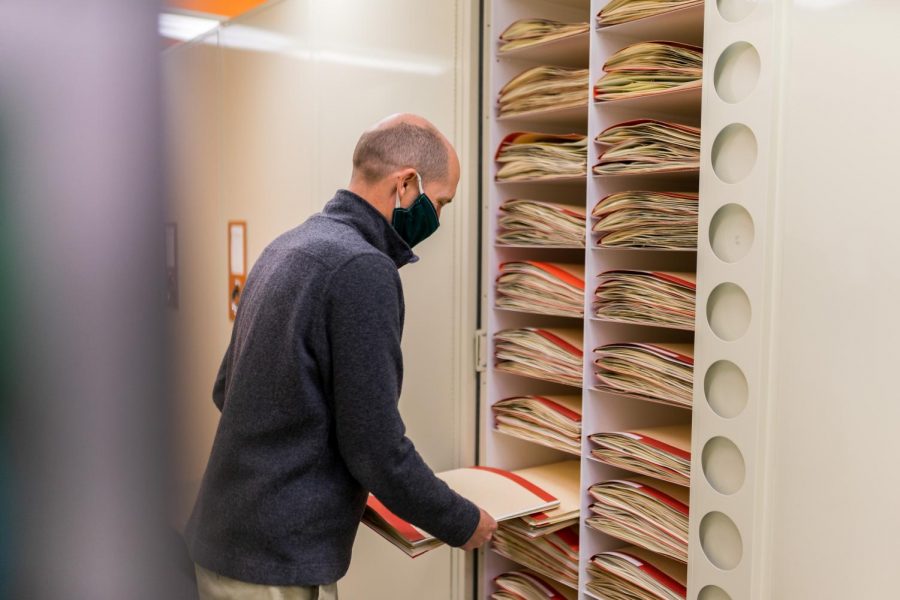Walking into the University of Minnesota Herbarium collection is disorienting.
Housed in a collection hidden on the eighth floor of the Biological Sciences building on the St. Paul campus are almost a million pressed plants, some from 2020 and others dating back to the early 1800s. Stored in upright filing cabinets, large manila folders of pressed plants are color coded by continent. In the scanning room, a wooden cabinet holds jars of algae preserved in hundred-year-old alcohol. In other drawers around the collection are small boxes of lichen clinging to scraps of gray rock.
As part of a statewide effort to digitize historically preserved collections like this one, the University has been working to scan, upload and label hundreds of thousands of specimens, which have long remained in the depths of their archives.
Though painstaking, the process will allow researchers to access data that will help them analyze how plants have evolved, changed or disappeared from an area over time. Researchers will also be able to extract DNA from the physical specimens in the collection, analyzing their composition.
“Having this record of plant diversity through time, ecologists have come to realize the value of these specimens to their studies, not just studies of plant biology but also studies of plant ecology,” said Tim Whitfeld, the curator of the herbarium collection. “Depending on the species or the location, some of these pieces are flowering two or so weeks earlier on average than they did 150 years ago. So this is an interesting kind of documentation of the effects of climate change.”
The data will be uploaded into the Minnesota Biodiversity Atlas, a web portal launched by the Bell Museum in 2016. Containing over five terabytes of information, there are 16,000 species catalogued so far, including other Bell Museum collections of mammals, fishes and birds.
The atlas also includes collections from other entities like the University of Minnesota-Duluth, the Science Museum of Minnesota and the Leech Lake Band of Ojibwe.
Katie Noren, the herbarium curatorial assistant, said uploading all the collections together on one site will allow people to see how different species interact.
“Each of these specimens are a unique snapshot of a time in history that is irreplaceable. You know, you can’t just find a new version of something that existed 70 years ago,” Noren said.
Because one-third of the University’s herbarium collection includes plants native to Minnesota, Whitfeld said the database is useful for University researchers, local botanists and ecologists and even students and citizens interested in plants. Citizens can also donate their time and transcribe handwritten labels for the project through an online portal.
Having these collections online makes the data more accessible to a global audience, Whitfeld said. Before, people wanting to view the collection would either have to visit in person or request the specimens on loan, which were sometimes shipped around the world.
Bec Skelton, a third-year arts major, started working on the project about two months ago. Taking photographs and labeling birds held at the Science Museum, Skelton also scans plants from the herbarium collection on campus.
Over time, Skelton said they get to know the names of collectors and learn to understand the historical context in which the plants were collected. For instance, Skelton said they see a lot of specimens from the early 1900s and the 1920s but hardly any in between, which could be an indicator that naturalists were not working during World War I.
“I enjoy working with primary documents, just from a historical perspective,” they said. “You’re able to draw a lot of little connections that you wouldn’t get otherwise. … You kind of get one little historical puzzle piece that everything else falls into.”














